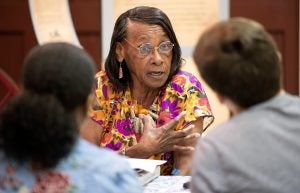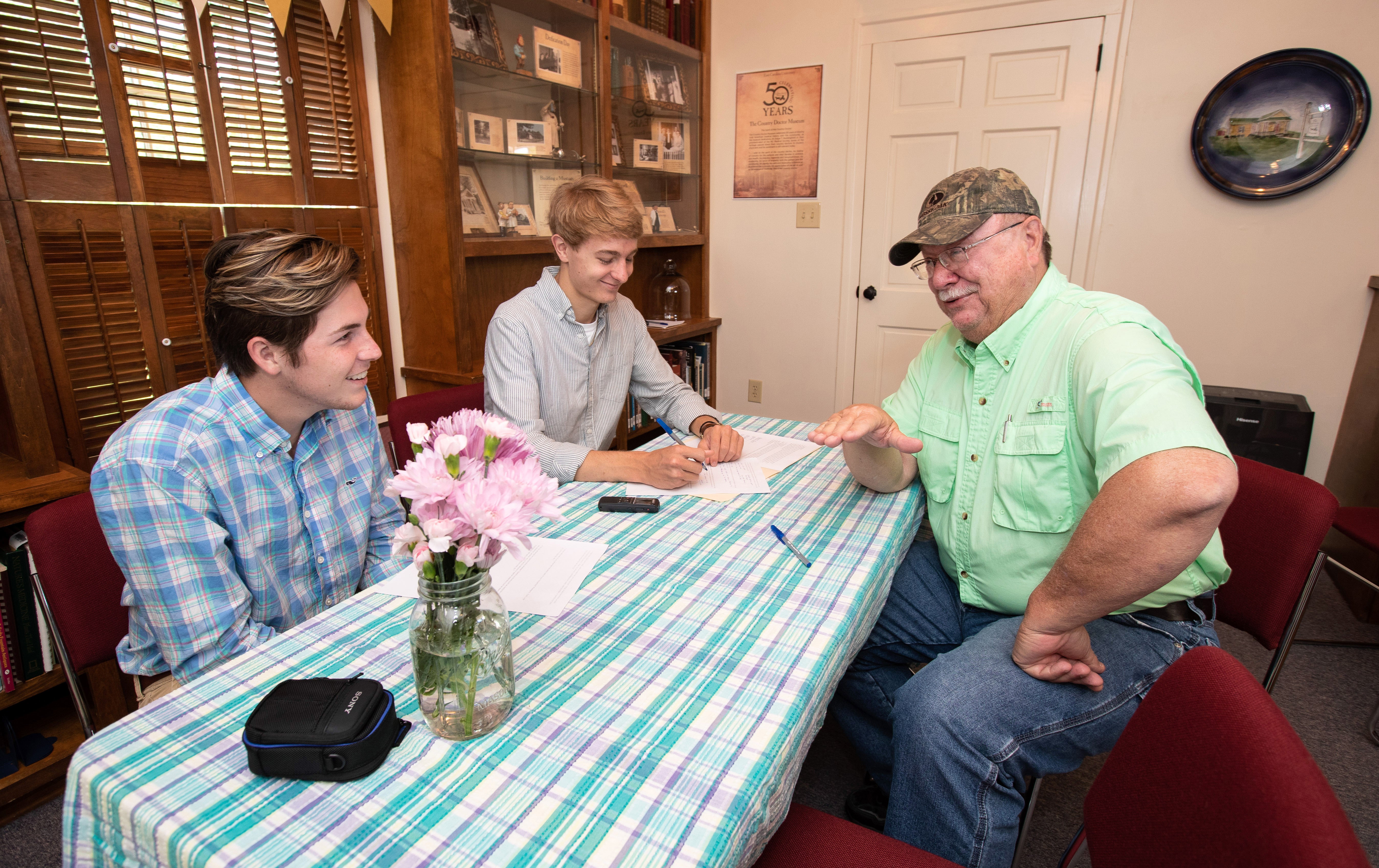PRESERVING OUR RURAL PAST: ECU’s Country Doctor Museum partners with high school students to make history
East Carolina University’s Country Doctor Museum in Bailey teamed up recently with students from Southern Nash High School to help preserve local history.
A student-led oral history event was held for Nash County residents on May 24 as part of an ongoing class project to create a digital history archive for the museum, which is managed as part of the History Collections at ECU’s Laupus Library.
“I tell my students there’s a difference between learning history and doing it,” said history teacher Scott Hendricks. “To personally speak with someone instead of reading it out of a book or seeing a video really makes history come alive.”
The students interviewed dozens of local residents about growing up in rural North Carolina during an era when most medical treatments were administered at home.
“I had a lady tell me that she had a cut to the bone and so her mother went and got a bunch of spider webs and packed the wound with them. Then her mother wrapped it with cloth and within three days it was healed,” sophomore Zach Smith said. “Some of these stories sounded strange to us today, but what they did was perfectly normal back then.”
Robert Hough, a junior, said he was surprised to learn that most people who lived in the area during the late 19th and early 20th centuries were from sharecroppers’ families and didn’t have insurance.
“Only one person told me his father had insurance and that was because he worked for a railroad company,” Hough said. “And when people paid their medical bill, it was in cash or they bartered meat or anything the doctor would accept as payment.”
After the interviews, many participants toured the museum, while others sat on a nearby porch and chatted with students, museum docents and other community members.
For Celia May Glover, the event felt like a homecoming celebration.
“I’ve lived all my life in Bailey. In fact, this place right here is where I grew up,” Glover said, pointing at the floor. “This is my home.”
Glover’s childhood home was repurposed in 1967 as the Country Doctor Museum – America’s oldest museum dedicated to the history of rural health care.
Glover views the polio vaccine as the biggest medical improvement in her lifetime. She recalled a nurse administering the oral vaccine to her as a child by feeding her a sugar cube bearing the live virus.
But what she remembers most about polio is her young neighbor who lived with it.
“She was in an iron lung because that was the only treatment for it back then,” Glover said. “If you were outside, which we were a lot at night, you could hear the noise of the iron lung.”
Anne Anderson, curator for the Country Doctor Museum, said the oral history project was a great start to the museum’s next 50 years because it will help the museum extend its focus beyond its current collections, which center on the late 19th and early 20th centuries.
“It’s remarkable for the students to have taken the lead with these interviews,” she said. “It’s important for them to hear the memories and stories firsthand, and for them to realize the contribution they are making to their community.”

Edna Mount talks about the scar that was left after receiving the polio vaccine when she was a young girl during an interview at The Country Doctor Museum in Bailey, N.C. on Thursday, May 24, 2018. (ECU Photo by Rhett Butler)
The students will transcribe the recorded interviews and select portions to include in the museum’s online digital history archives.
Anderson hopes the project is only the beginning of an oral archive documenting the unique aspects of life in eastern North Carolina.
Hendricks said the interaction between the students and the older community members was a highlight of the event.
“Typically that’s not going to happen a lot between the different generations because of their differences with one another,” he said. “History is something everyone can relate to, and in this community, it brings everyone together.”
